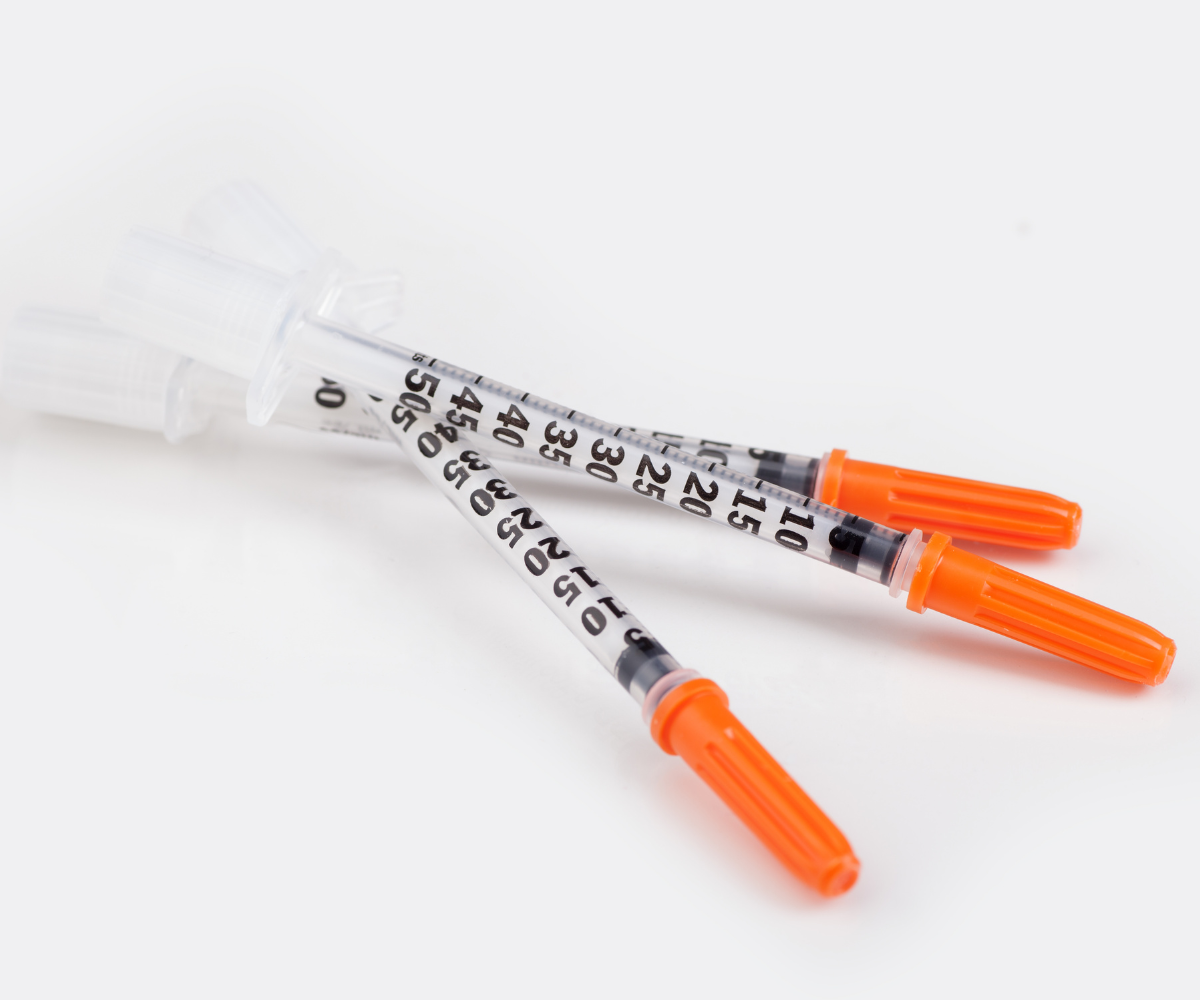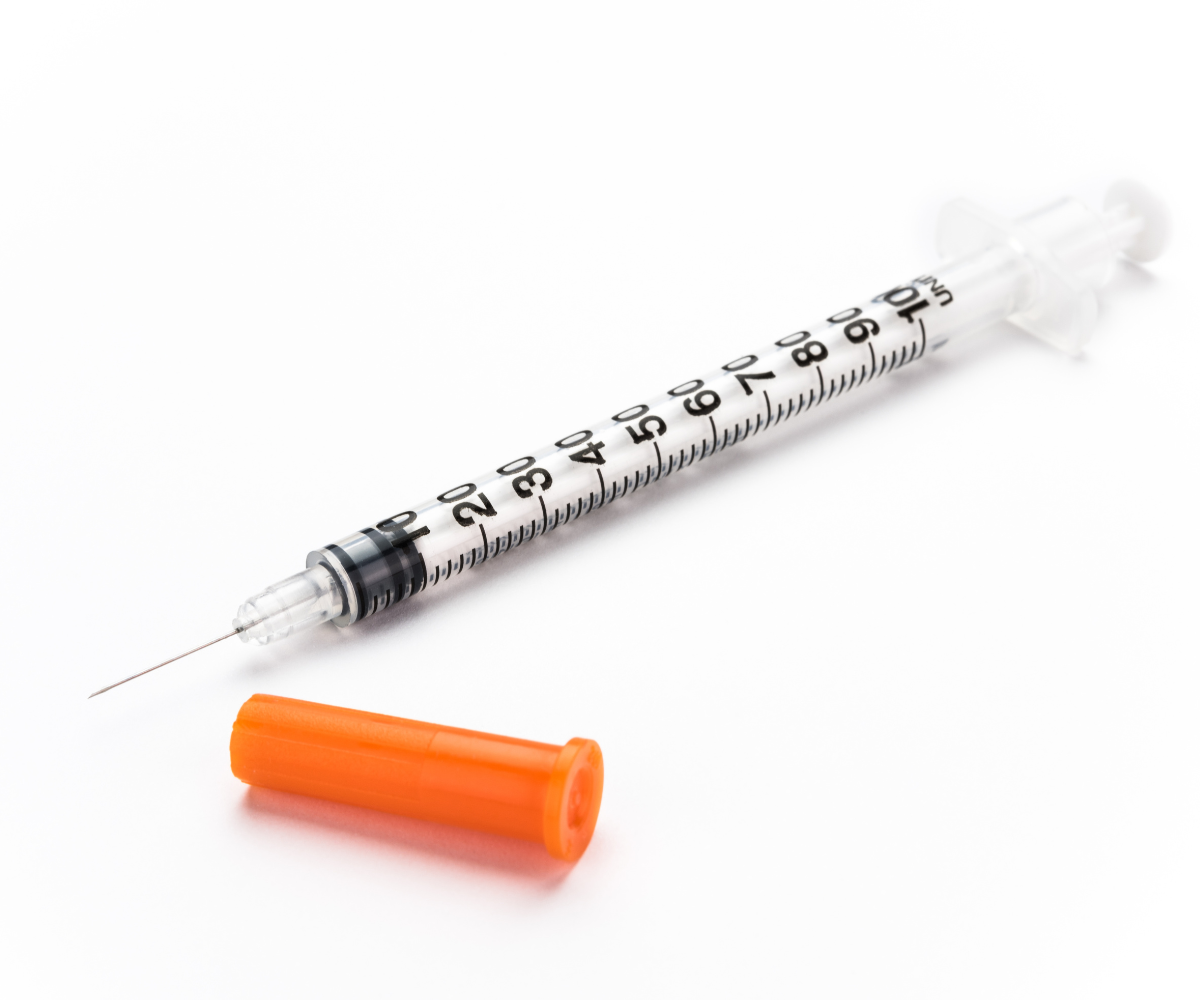
How to Read an Insulin Syringe

Insulin syringes are used for subcutaneous injections that go into the fatty layer of the skin.
Insulin, Testosterone Replacement Therapy, GLP-1s, and injectable nutrition can all be injected subcutaneously with an insulin needle.
But how much do you inject, and how do you read the measurements on your insulin syringe?
We’ll go over the different syringe sizes, how to read the markings on the syringe, how to calculate the number of units in your dose, and more.
Types of Insulin Syringes
There are various kinds of insulin syringes. The kind you utilize will depend on your prescription and the instructions from your provider.
Syringe Size
The size of the syringe depends on the amount of medication it can hold. The three sizes of insulin syringes are:
- 0.3 mL (30 units)
- 0.5 mL (50 units)
- 1 mL (100 units)
Insulin needles typically use milliliters (mL) and units as measurements. There are 100 units in a mL, meaning 1 unit is .01 mL.
Your provider should let you know what size insulin syringe you need based on your dosage. But you can also calculate it yourself by comparing the number of mLs in a syringe compared to your prescribed dosage.
Needle Gauge
Gauge is the size of the needle opening. The higher the gauge number, the smaller the needle. Smaller needles lead to more painless injections, but larger gauges can be necessary for a variety of reasons.
Medications require different needle sizes depending on the depth of the injection, the viscosity of the medication, the location in which it’s being injected, and other factors.
Subcutaneous insulin needles typically run between 26 gauge to 31 gauge.
Needle Length
Needles also come in different lengths. The length of the needle dictates how far into the skin the needle can go.
Insulin needles are typically very small, since they only inject into the fatty layer of the skin. Intramuscular needles are longer to ensure the medication reaches the muscle.
Common insulin needle lengths are:
- 1/2 in
- 5/16 in
Combining These Measurements
All insulin needles have a syringe size, gauge, and needle length. When you combine these measurements, you arrive at the specific insulin needle you need.
Your provider and pharmacy should give you guidance on the right insulin needle for your treatment.
Defy Medical patients can contact our Patient Support team at [email protected] if they have any questions about their insulin syringe order.

How to Read an Insulin Syringe
To read your insulin syringe, you’ll need to understand milliliters and units.
Each small dash on the syringe is one unit, or 0.01 mL. Syringes will typically be labeled per 10 units, so the syringe reads 10, 20, 30, 40, 50, and so on.
When you draw up your medication, you’ll fill it to the appropriate measurement for your dosage.
How to Calculate your Dosage
To inject your medication, you’ll also need to know how your dose converts to the mL and unit measurements on the syringe.
Your provider should give you this calculation as part of your medication instructions, but you can also calculate it on your own.
Your medication dosage will typically be communicated in milligrams (mg), while the vial strength is measured in mg/mL. The overall vial size is often provided in mL.
Once you know the vial size and the amount of medication per mL, you can convert your mg dosage into mL. From there, you can convert it into units by keeping in mind that 1 unit is .01 mL.
Let’s use an example medication and dosage protocol to demonstrate how to calculate your dose.
- Vial: A 10 mL Testosterone Cypionate vial with 200mg/mL
- Dosage: 100 mg injection weekly
- 1 mL insulin needle (100 units)
In this medication, there are 200 mg in each mL of the formula. That means there are 100 mg in 0.5 mL, which is our dosage. So, there are 20 doses of 100 mg in the 10 mL vial.
With this knowledge, we can calculate that the 100 mg dosage for this vial is 0.5 mL. We take this dosage to our 1 mL insulin syringe and convert it to units. For this particular scenario, 0.5 mL is 50 units.
So, your dosage would be 50 units, or half the 1 mL syringe volume.

Where Can I Buy an Insulin Syringe?
Insulin syringes can be purchased online or in pharmacies. Some states require a prescription for insulin syringes, while others don’t.
Defy Medical patients can purchase their insulin syringes and other supplies, like alcohol wipes and sharps disposal containers, easily via the online patient portal.
Feel Better with Defy Medical
For more than 10 years, Defy Medical has been providing telemedicine care to thousands of patients across the country, leading them to healthier and more fulfilling lives. Our providers specialize in integrative medicine and offer personalized treatment plans with extended consults.
Defy Medical patients access services like hormone replacement therapy, weight loss programs using innovative therapies like Semaglutide, thyroid disease treatment, sexual health therapies, and much more.


